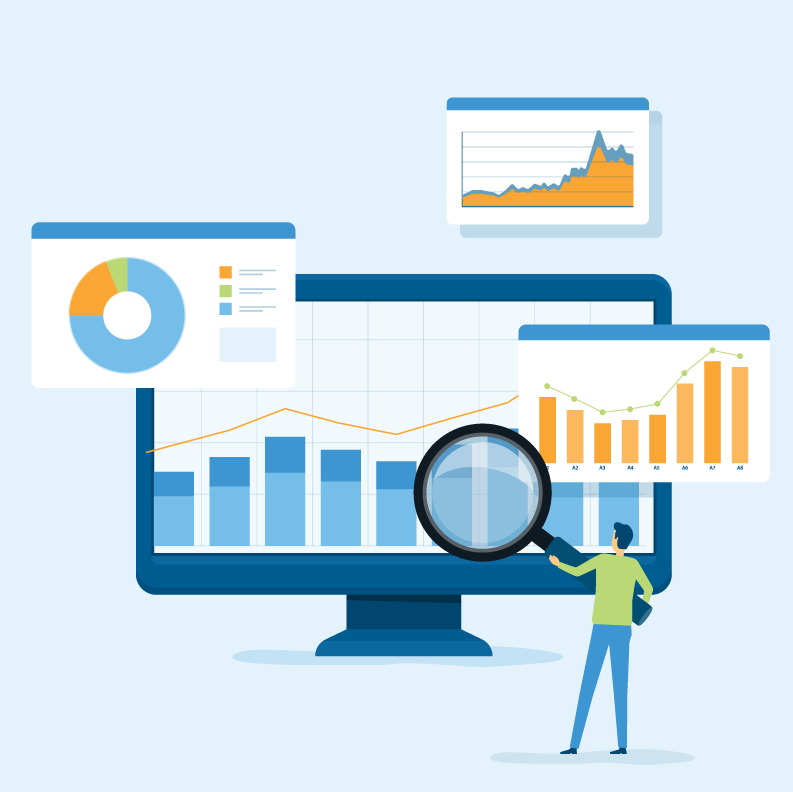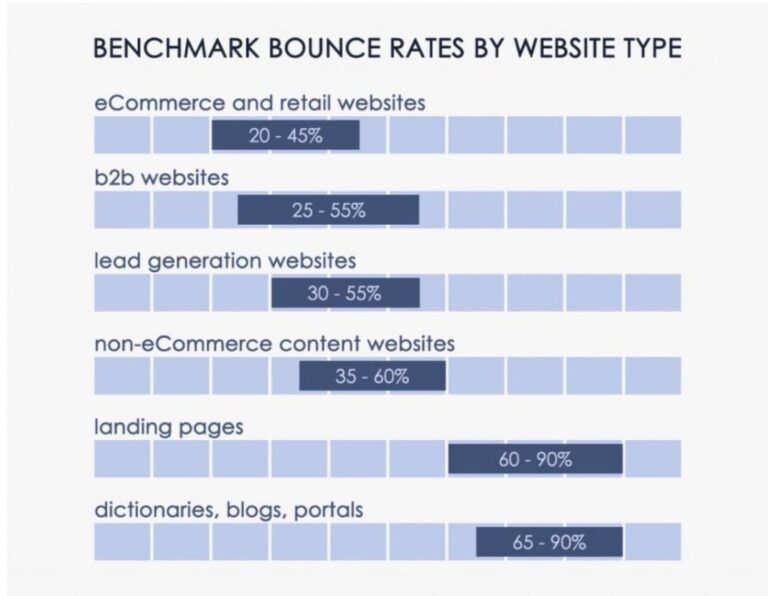
Do you track your heart rate? Or your cholesterol? What about your blood sugar levels? Monitoring your health stats is always a good idea, but determining which ones to watch is different for everyone.
It’s the same with your e-commerce strategy. There are a number of key performance indicators (KPIs) to monitor to keep your program in top health. But the right mix of metrics? That depends on the goals and characteristics of each individual team.
We’ve put together 10 of the most common and important e-commerce metrics to watch, as well as a guide to help you better understand your brand analytics. You be the judge of which KPIs will lead to the greatest success for your program.
What Are E-Commerce KPIs?
E-commerce KPIs are measurements that allow you to assess the success or failure of your digital strategy.
These program components may include everything from social media ad conversions and return on advertising spend (ROAS) to fulfillment efficiency and delivery rates. From end to end, the e-commerce journey includes a mountain of data points for marketers to choose from.
Whereas platforms like Google Analytics and Amazon Seller Central can provide you with key KPIs for their specific channels, brand analytics solutions allow you to see across the full breadth of your e-commerce program.
Why Are E-Commerce KPIs Important?
It’s impossible to know where you’re headed if you don’t know where you currently stand.
Digital commerce metrics allow you to regularly assess the health of:
- A campaign
- A channel (e.g., marketplace, website or social)
- An aspect of your e-commerce program (e.g., marketing, advertising or fulfillment)
- Your overall e-commerce strategy
Armed with performance data, you can optimize these program components and make better decisions about sales, marketing, customer experience and more. Positive performance may prompt you to invest more in campaigns that work well, while negative performance calls your attention to areas that aren’t working.
No data means no visibility. Without e-commerce KPIs, you must rely on hunches and gut instincts to make important selling decisions.
What Are the Most Important E-Commerce Metrics to Track?
Again, the top KPIs to track will differ between companies. A small boutique with a modest budget may want to pay more attention to its ROAS, while a national chain may be interested in global expansion metrics. However, here are a list of the top 10 e-commerce KPIs that most brands and retailers track:
1. Conversion rate
A conversion rate is the rate at which consumers “convert” or perform a desired action. This could include clicking a button, subscribing to your newsletter, completing a purchase or interacting with an ad, among many other actions. Conversion rates indicate whether or not certain parts of your program are resonating with customers. They are especially helpful in gauging performance of a recently modified component like a web page or ad.
You can calculate conversion rate by dividing the number of conversions (or actions taken) by the number of viewers, visitors or interactions and multiplying by 100.
Conversion rate = (conversions / interactions) x 100
2. Customer acquisition cost (CAC)
Customer acquisition cost is the amount it costs you to acquire one new customer. Be sure to factor in every expense it requires to gain a new customer, from ad purchase and marketing costs to overhead and labor.
It’s important to keep this number lower than your average order value (AOV) to ensure profit. Otherwise, it’s indicative of spending more than you’re bringing in.
To calculate this metric, divide your total cost of acquiring all new customers in a given campaign or channel by the number of customers acquired.
CAC = total cost of customer acquisition / number of customers acquired
3. Cost per acquisition (CPA)
Cost per acquisition is similar to CAC, but it assesses spend for consumers before they become paying customers. These leads or non-paying customers might include shoppers who click on an ad, but haven’t yet made a purchase.
This metric is useful for identifying the cost of simply getting a consumer to engage with your brand. Use the following equation to calculate CPA:
CPA = total cost of lead acquisition / number of leads
4. Average order value (AOV)
Average order value is the average amount your customers spend per order. Note that this KPI should not include things like tax or shipping — only the amount of revenue you receive from each order.
Though simple, this is an important metric for better understanding your customers’ shopping habits and making a quick, yet efficient impact on your revenue. You can increase AOV by promoting:
- Bundled products
- Buy two (or more), get one free promotions
- Discounts for reaching a minimum spend threshold
Calculate your AOV by dividing revenue by total orders:
AOV = revenue / number of orders
5. Net profit
Calculating net profit is basic business. To make money, you have to bring in more revenue than you’re spending. That’s why net profit is a key indicator of your e-commerce program’s overall health.
Net profit = total revenue – total expenses
6. Cost of goods sold (COGS)
Cost of goods sold (or cost of sales) is a manufacturing and production metric used to calculate the cost of producing or acquiring products. It includes the cost of materials and labor, but does not account for indirect expenses like distribution, overhead or marketing. It is an important metric for calculating gross profit and how efficient your company is at managing labor, supplies and production.
Calculate this KPI with some basic addition and subtraction:
COGS = beginning inventory + sales − ending inventory
7. Return on ad spend (ROAS)
Return on advertising spend is a key metric for determining ad campaign success. It measures the amount of money you make on a campaign for every dollar you spend. The higher the ROAS, the more successful the campaign.
Average ROAS can change depending on the channel type (e.g., social media or web search), platform (e.g., Google or Facebook) or retail media network (RMN) (e.g., Amazon Advertising or Walmart Connect). Calculate ROAS with this equation:
ROAS = total ad sales / total ad spend
Learn how to increase your ROAS and more in our comprehensive post.
8. Return on investment (ROI)
Return on investment is similar to ROAS, but it can be applied to any investment the business makes (e.g., marketing software or company acquisition). Investors and business leaders often use this metric to determine how well an investment has performed. ROAS, on the other hand, is a very commerce-centric metric that focuses on the return of a particular ad campaign. Calculate ROI with the following formula:
ROI = (net income / cost of investment) x 100
9. Cart abandonment rate
Here’s one metric you don’t want to be high. Cart abandonment rate measures how many shoppers fail to complete their purchase. A high rating can indicate:
- Shoppers found a better price somewhere else
- You don’t have enough payment options
- You don’t offer enough shipping options
- Your checkout process is too complex
Identify your cart abandonment rate by dividing the number of completed sales (not the dollar amount) by the number of carts and multiply by 100.
Cart abandonment rate = (sales / carts) x 100
Luckily, reducing your cart abandonment rate is one of the easiest and most impactful ways to boost revenue. By integrating more payment options, rethinking fulfillment or improving your checkout experience, you can knock down the roadblocks on consumers’ path to purchase.
10. Customer lifetime value (CLV)
Customer lifetime value is one of the most highly coveted marketer KPIs — but it’s also one of the most difficult to compute. CLV measures long-term customer retention and is an indication of brand loyalty. It tells you how much a consumer will spend with your company over their time as a customer.
If your CLV is close to your AOV, it means customers are only making one or two purchases from you over their lifetime. If CLV is significantly higher than AOV, it indicates repeat purchases and total value that far exceeds an individual purchase amount. Use this formula to determine CLV:
Customer lifetime value = (customer value x average customer lifespan)
What makes CLV difficult to compute is determining customer value and how long they typically patronize your brand. Calculate customer value by multiplying the average purchase value by the average number of purchases:
Customer value = average purchase value x average number of purchases)
Which E-Commerce KPIS Should You Measure? ChannelAdvisor Can Help.
It’s nice to have metrics on hand, but you’re a marketer — not a mathematician — and calculating each KPI manually is unsustainable. While platforms like Amazon and Google provide helpful campaign metrics, they don’t provide a full picture of your e-commerce program.
ChannelAdvisor provides a suite of tools to gauge your company’s performance. With a real-time picture of each part of your program and expert guidance from Managed Services, you can make better decisions for managing your digital shelf and growing sales.
Contact us for a demo of the ChannelAdvisor platform today.






